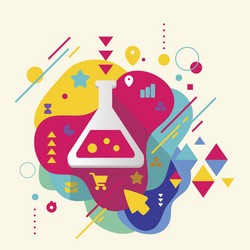Water-based production of nanoparticles
Nanoparticles are in car panel dyes, hydrophobic coatings for self-cleaning glass, electro-optical materials in photovoltaics, and even biocompatible and antimicrobial materials for artificial limbs and meical imaging. Nanotechnology is a fast-growing market and future projections until 2020 estimate that the global industry will grow to reach over EUR 70 billion. Given the volume and economic importance of nanomaterials to its economy, the EU is funding cutting-edge research to make their production faster, more reliable, safer and greener. The SHYMAN (Sustainable hydrothermal manufacturing of nanomaterials) project developed a pioneering reactor design that changes the way nanomaterials are produced. The reactor exploits high-pressure, high-temperature (hydrothermal) water in a continuous flow scheme in direct contrast to the conventional dry-based, bottom-up technologies. The result is efficient mixing and uniform nanoparticle size without the use of hazardous solvents. In addition, the water is recycled. Producing nearly 1 000 tonnes per year of nanoparticles, SHYMAN's new reactor should remain the largest continuous-flow hydrothermal plant in the world for years to come. High-quality nanomaterials can be produced, including metals, metal oxides, hydroxides, carbonates and sulphides as well as more complex nanoporous materials such as metal-organic frameworks. Using continuous hydrothermal synthesis, the reactor can produce the optimum product for each application. Project partners demonstrated the efficiency of the process by producing a range of products for seven different applications. Nano-hydroxyapatite was tested for its potential to manufacture synthetic bone graft substitutes, sulphide materials were lubricants, metals were used in printed electronics as substrates to increase efficiency of organic photovoltaic cells. In addition, newly produced nanomaterials with photoluminescent properties were tested in car headlights, and inorganic nanomaterials were used to increase hydrophobicity for self-cleaning surfaces. The new plant will put the EU at the forefront of a technology set to change the face of the multi-billion-euro nanomaterials sector. The new water-based production of nanoparticles should lead the industrial world in a new generation of materials.







